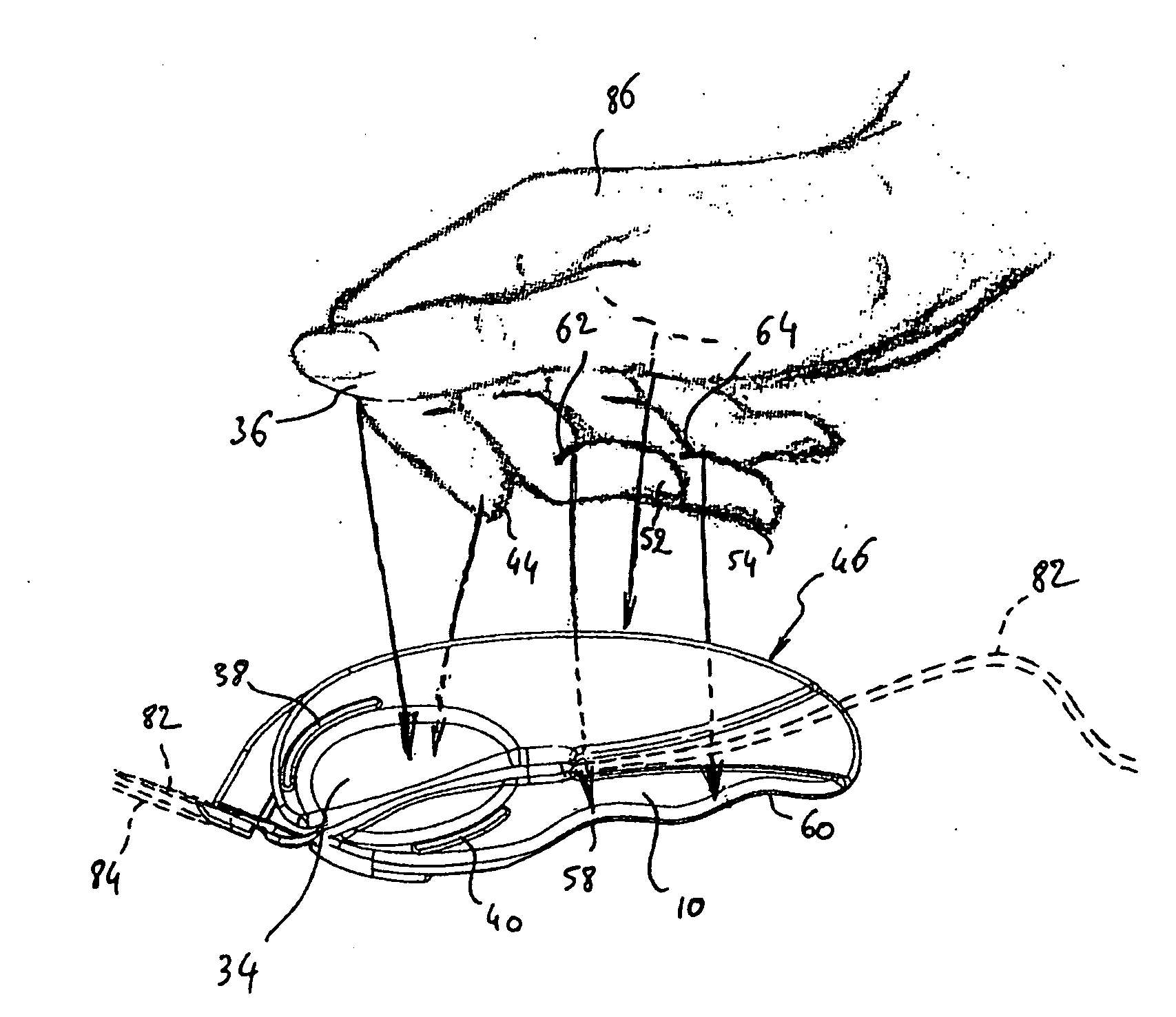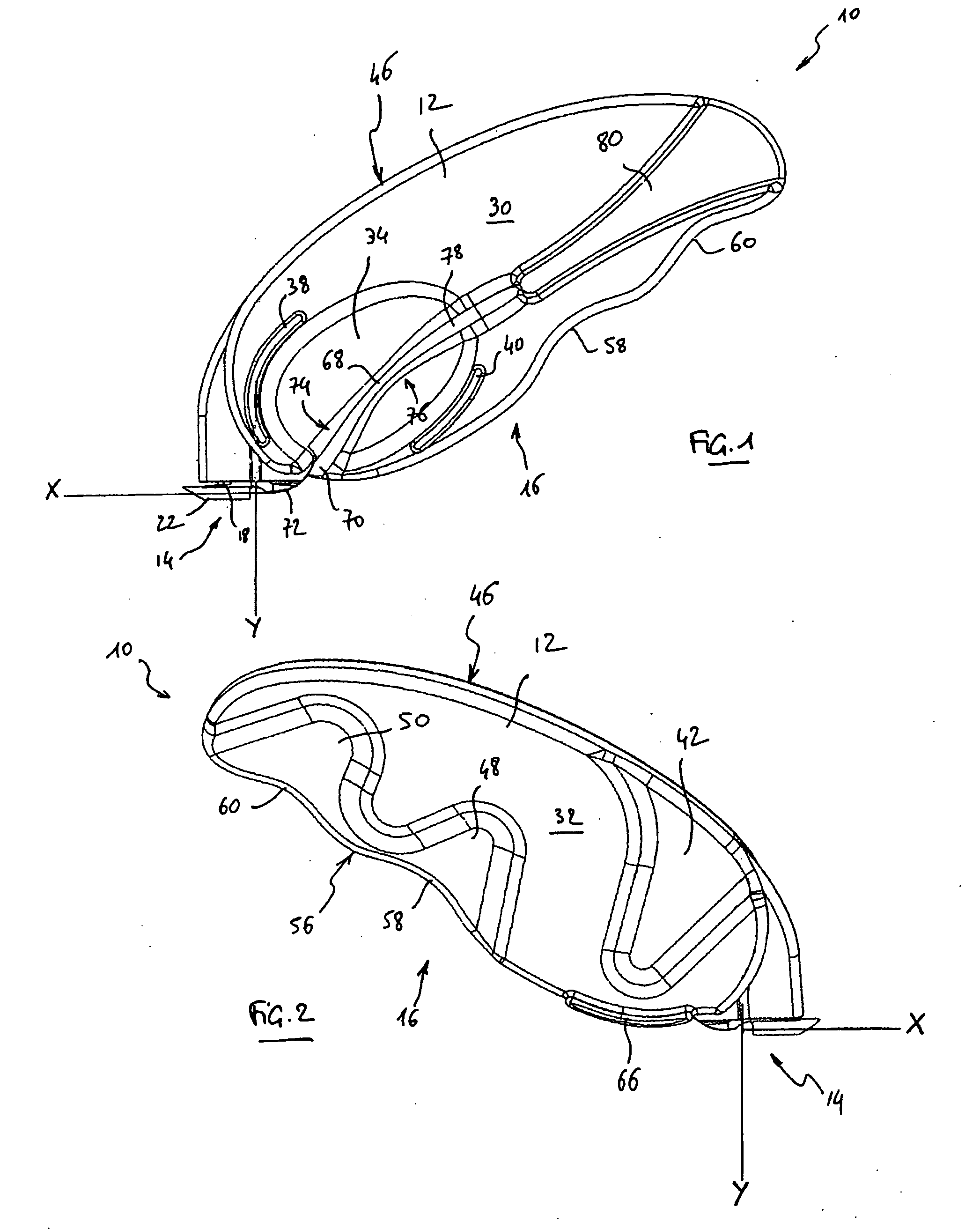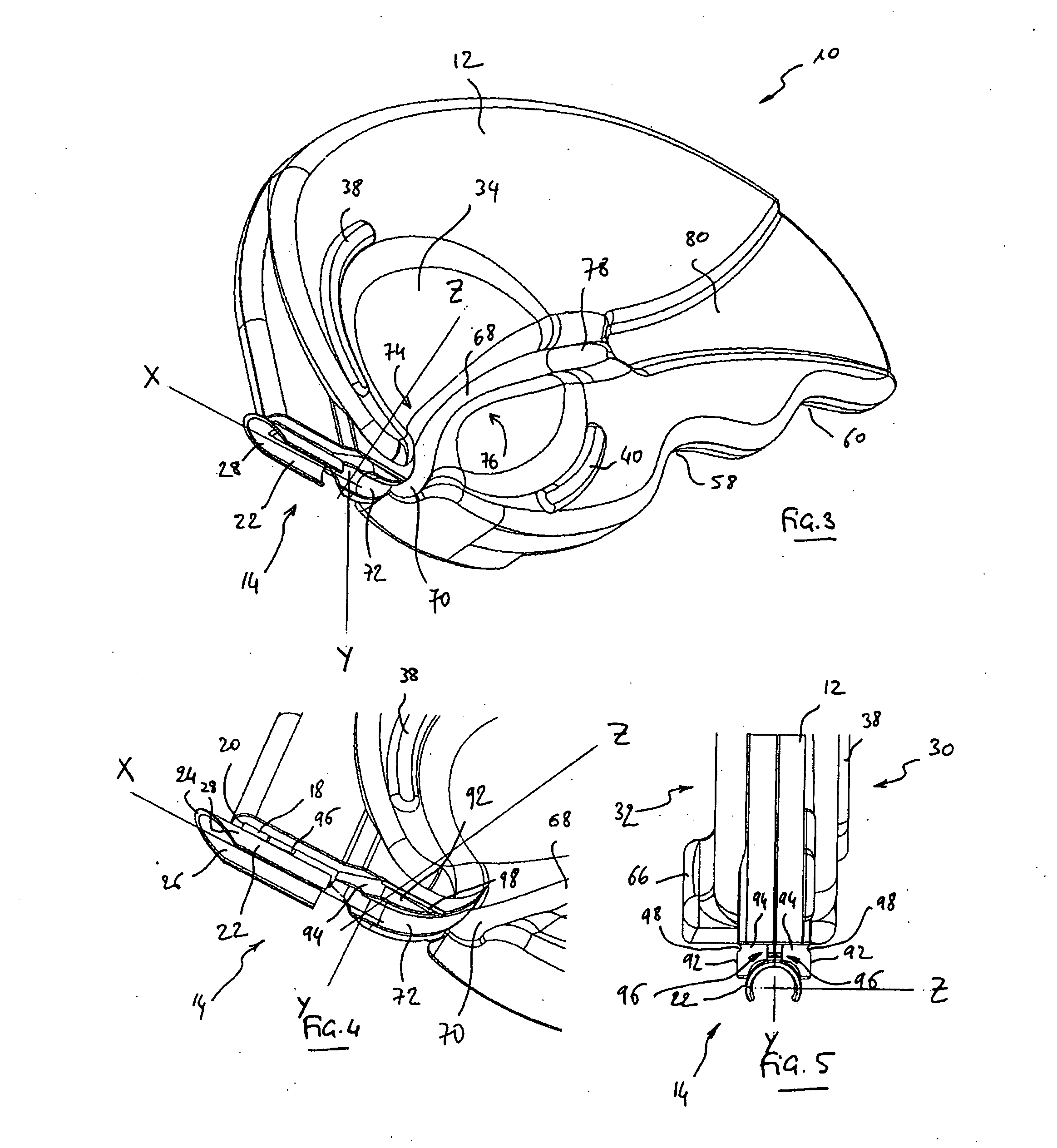Slitter tool for cutting a tubular sheath of a guide catheter
- Summary
- Abstract
- Description
- Claims
- Application Information
AI Technical Summary
Benefits of technology
Problems solved by technology
Method used
Image
Examples
Embodiment Construction
[0047]One will now describe an embodiment of the slitter tool according to a preferred embodiment of the present invention. With reference to the figures, reference 10 generally corresponds to the slitting tool or “slitter” tool of the present invention. Tool 10 comprises a blade holder body 12 with a roughly flattened shape, comprising a cutting area 14 and a prehension area 16.
[0048]Tool 10, for example, presents the following typical overall dimensions: length (the longer longitudinal dimension of the tool) of 65 to 100 mm, width (the longer transversal dimension) of 35 to 40 mm, and thickness of 5 to 6 mm. Of course, these dimensions are exemplary, and in no way limitative; and one of ordinary skill in the art will understand that the size of tool 10 must be such that the tool may be handled in the inside of a surgeon's hand, and not merely between the thumb and the forefinger, as it is the case with the various slitter tools that have been proposed by the prior art so far.
[0049...
PUM
| Property | Measurement | Unit |
|---|---|---|
| Distance | aaaaa | aaaaa |
| Distance | aaaaa | aaaaa |
| Distance | aaaaa | aaaaa |
Abstract
Description
Claims
Application Information
 Login to View More
Login to View More - R&D
- Intellectual Property
- Life Sciences
- Materials
- Tech Scout
- Unparalleled Data Quality
- Higher Quality Content
- 60% Fewer Hallucinations
Browse by: Latest US Patents, China's latest patents, Technical Efficacy Thesaurus, Application Domain, Technology Topic, Popular Technical Reports.
© 2025 PatSnap. All rights reserved.Legal|Privacy policy|Modern Slavery Act Transparency Statement|Sitemap|About US| Contact US: help@patsnap.com



